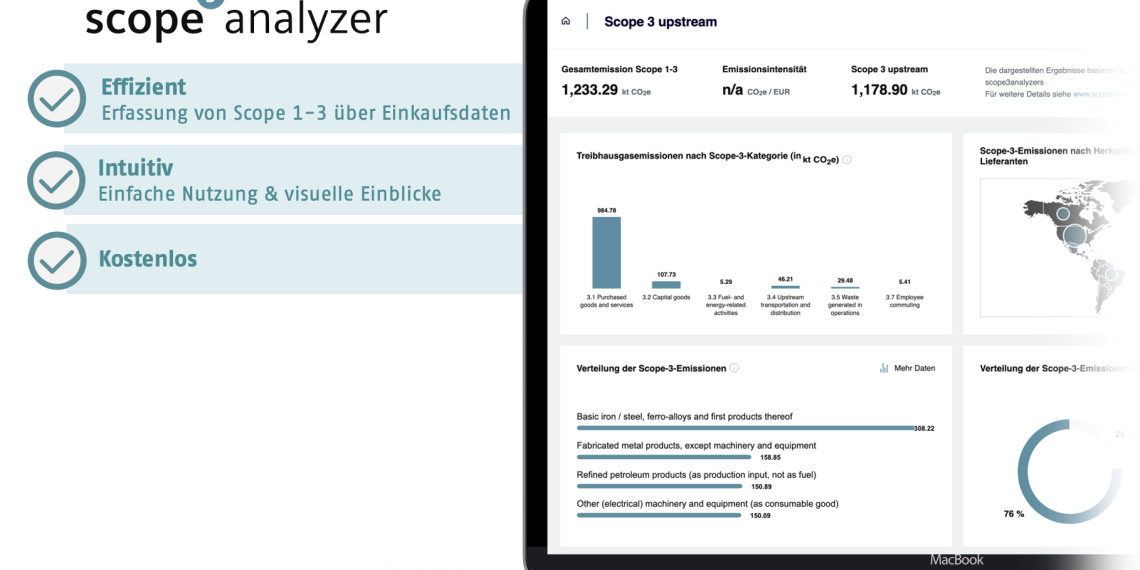In cooperation with the Think Tank for Industrial Resource Strategies in Karlsruhe, the Institute for Industrial Ecology (INEC) at Pforzheim University of Applied Sciences has designed a tool that makes it easy to determine the greenhouse gas emissions of companies. The so-called scope3analyzer has now been released on the think tank’s website and is publicly accessible free of charge. Prior to this, the tool, which was further developed together with the Hamburg-based company Systain Consulting GmbH, was extensively tested with practical partners from industry. The ZEISS Group and Robert Bosch GmbH were directly involved in the project. The development was supported by the Baden-Württemberg Ministry of the Environment.
Determining an operational carbon footprint is the first important step on the way to climate protection in companies. Where are the biggest contributors to emissions and where should measures start first? “We now know that upstream emissions in the corporate supply chain make a significant contribution, often the largest,” says project leader Professor Mario Schmidt. But collecting these emissions, which in technical jargon are always referred to as Scope 3 emissions, is a major challenge. Large companies often have thousands of suppliers and upstream products, from home and abroad, and wonder where they can get the figures from and how robust they are.
The tool is a very easy way for companies to get started with climate accounting: It is free, web-based, works completely anonymously, and can calculate emissions directly based on the company’s existing purchasing and consumption data. The tool is also report-compliant — common international standards such as the Greenhouse Gas Protocol, the Carbon Disclosure Project, and the Science Based Targets Initiative accept the methodology used.
The emission contribution of the supply chain is estimated using economic data. This can then even include emissions from upstream products that come from Asia or other regions of the world. This leads to a comprehensive picture of corporate activity and enables the identification of hot spots of greenhouse gas emissions. In addition, direct emissions on site and indirect emissions from purchased energy are also calculated.
“The scope3analyzer unfolds its potential the more suppliers a company has and the more difficult it becomes to research individual figures. Above all, the data should be collected using the same method and thus be comparable. This is ensured by the method we use.”
- Professor Mario Schmidt

















